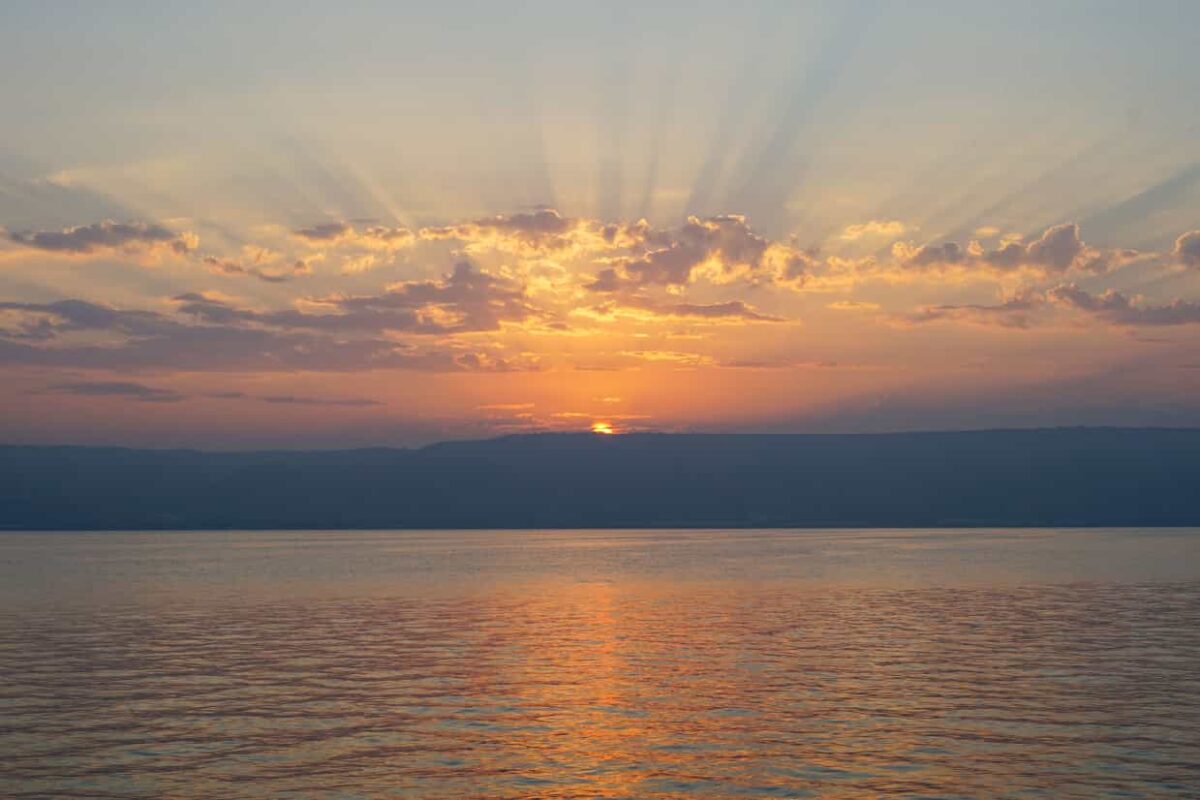
Another lovely sunrise over the mountains of Moab and across the Sea of Galilee greeted us as we began our day from the 2nd floor of our seaside hotel.

The bus driver carefully steered our van on the crowded switchbacks along the Sea of Galilee until we climbed the hills to the Mt of Beatitudes. The site was ideal for Jesus to instruct his disciples and the crowd with his teachings of a new way of life for those who desire to follow him. Sadly, the area has become commercialized and we only spent a short time photographing a few points of interest.
We continued our ride to the Northern most section of Israel known as the area of Tel Dan. Enroute, we enjoyed a time of singing then Andrew taught us the meaning of Talmadim and how the Jewish boys would go to school to study the Torah then choose someone they admired to be their Rabbi and diligently strive to follow his ways to become an honored Rabbi. He challenged us to follow Jesus (our Master Rabbi) closely to be able to imitate him in our daily lives.

Tel Dan Nature Reserve has both natural beauty and historical sites. We learned that Tel means “mound” and Jordan means “out of the Dan”. Here is the location of Dan Springs which feeds approximately 2/3 of the Jordan River. It’s icy waters come from the Mt. Hermon snow melt although there was no sign of snow on the mountain today.

Excavations have uncovered the ancient city of Dan including the gate area and double wall at the entrance of the town and the king’s seat beside the gate. They also had an altar or high place for golden calf worship which was indicated by the cut stone, size, and steps which are pagan practices. This type of worship began when the kingdom of Israel was divided and Jeroboam wanted to keep the people from having to travel to Jerusalem to worship. I King’s 12:26-33

More recently a stone was found outside the city gate in the market place area that records that the Syrians met David’s army which helps historians and archeologists verify David’s existence during this time.

Another very fascinating excavation is the ancient Canaanite gate at the town of Leahem, likely seen or passed through by Abraham when he came to save Lot. (Gen. 14:13-16) Found in 1966.

Caesarea Philippi was built by Philip, the son of Herod the Great. The Banias River flows through the cave and is one of the 3 tributaries of the Jordan River. This is where the shepherds came to sacrifice goats and to appease the god, PAN. They threw the sacrifice into the water and thus the water turned to blood and became known as the Gates of Hedes. It was here that Jesus visited with his disciples and where Peter identified Jesus as the Messiah.

We continued our journey through the hills of the Druze people who are a minority group and have a very confusing form of religion but have developed tremendous terraced agriculture and made the land fruitful and productive with the best cherries and apple orchards, along with planting grapes on 4 different altitudes to create a variety of flavors from the same root stock. The grapes bring in revenue through wineries.



The next stop was at an overlook close to the Syrian Border where we could see the UN Buildings and other abandoned cities due to the destruction of ISIS.

Our journey continued to Katzrin which is a reconstructed 4th-7th century Talmudic village where we viewed the stone called Moses’ seat. We were challenged with the thought of whether we would be able to sit in Moses’ seat. We were also able to see the only ancient working olive press in Israel and a wine press.

We were privileged to experience rain and sleet today and rejoice with the Israelis that the early rains are a part of their promise from a Faithful Creator. James 5:7
